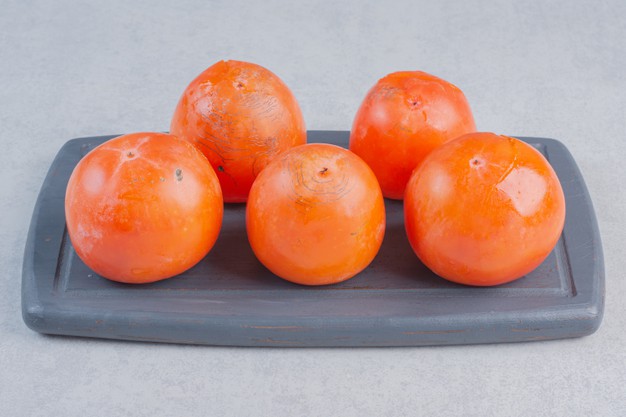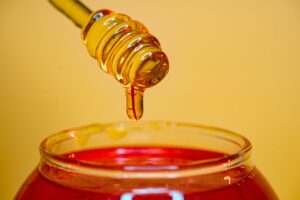Sharon fruits can be eaten fresh, used in sweet or savory dishes, and canned both dried and canned. It can be eaten whole at any stage of ripening, although the pulp may become translucent as it ripens, but still edible. Add fresh Sharon fruit to salads, sauté and serve with mascarpone cream, or use in baking recipes.
Sharon fruits can be made into sauces, jams, chutneys, marinades, and puddings, where they are often combined with spices such as cinnamon, ginger, nutmeg, allspice, and cloves. Sharon fruits complement grilled shellfish and pork, and pair well with endive, coriander, courgette, figs, pears, olive oil, softer cheeses like Vallejo and goat cheese, or aged cheeses like manchego and parmesan.
For canning, the fruit can be peeled and dried whole or cut into slices with or without the skin before drying. Unripe Sharon fruits will continue to soften at room temperature and take about a week to ripen for speed up the process store at room temperature next to bananas or apples. Ripe Sharon fruits can be stored in the refrigerator for about three days.
Geography/History
Looking back at the origin of the Sharon fruit, it can be said that the Japanese persimmon, in general, is the homeland of China, where it has been grown since about 1000 BC. E. Japanese persimmon quickly spread from China to Japan and Korea, where since then many varieties have been developed over the centuries.
They were introduced to Europe sometime in the 1600s and to the United States in the mid-1800s, although the first documented photograph of a mature Sharon fetus in America appeared much later, in 1913. Spain and South Africa, with a small scale in California and the Gulf countries, mostly in home gardens.
Fruits
Fertilization of an egg in the carpel with a compatible pollen grain leads to the development of seeds in the carpel. (Formation of a fetus without fertilization of the egg and subsequent development of seeds is called parthenocarpy.) The fetus is a mature ovary (or complex ovary) and any other structure, usually hypanthium, that matures and forms a single whole with it.
This separates the fruit from the vegetable because the vegetable-only comes from vegetative (non-productive) organs. Tomatoes, eggplant, and squash are fruits. They are obtained from the flower parts, whereas carrots, turnips (Brassica rapa), and beets are vegetables because they are roots modified as storage organs, just like potatoes, ginger (Zingiber officinale) and onions are modified stems.
Simple fruits grow from a single carpel or complex ovary. Aggregate fruits are composed of several individual carpels of a single apocarpous gynoecium (eg, raspberries, where each unit is a separate carpel). Multiple fruits are composed of the gynoecium of more than one flower and are a whole inflorescence, such as figs and pineapple. Additional fruits include other parts of the flower in the development of mature fruits; for example, the hypanthium is used to form the pear (Pyrus; Rosaceae), and the receptacle becomes part of the prickly pear.
The shape, texture, and structure of fruits vary (especially with simple fruits), but most of them fall into several categories. The fetal wall, or pericarp, is divided into three areas: the inner layer, or endocarp; the middle layer, or mesocarp; and the outer layer, or exocarp. These areas can be fleshy or dry (lightened), or any combination of these, but they are classified as one or the other.








